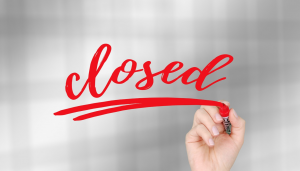By: Barry Friends | Gary Karp
July 27, 2020
 Covid-19 sparked a massive food purchase channel shift from restaurants to retail, one which may take years to unravel, if ever. By “if ever,” we mean that while the calories consumers historically captured through FAH (Food At Home-65%) vs. FAFH (Food Away From Home-35%) may return to their pre-pandemic ratios respectively (call that “stomach share”), the related approximate 50/50 consumer nominal “wallet share” of consumer $ expenditures split is more likely to remain elusive.
Covid-19 sparked a massive food purchase channel shift from restaurants to retail, one which may take years to unravel, if ever. By “if ever,” we mean that while the calories consumers historically captured through FAH (Food At Home-65%) vs. FAFH (Food Away From Home-35%) may return to their pre-pandemic ratios respectively (call that “stomach share”), the related approximate 50/50 consumer nominal “wallet share” of consumer $ expenditures split is more likely to remain elusive.
The foodservice industry’s extraordinary wallet and stomach share gains of the late 20th century were driven by Americans’ appetite for convenience and value. Increasingly prosperous baby boomers in their prime wage-earning and child-rearing years came to rely on QSR drive-thru and casual dining venues to satisfy their need for nutrition and socialization in between work, school, sports, and everything else that was happening in their busy lives. A rapidly-expanding restaurant industry helped fuel an entire generation’s ambitious lifestyle; and now, that generation’s children (Millennials) find themselves in their parent’s shoes balancing familiar “need states” in an era where the cost of FAFH has out-inflated FAH.
Most of the pandemic’s casualties have occurred among the industry’s huge population of “Full-Service Restaurants” (FSRs), which in 2019 represented nearly 44% of restaurant sales and 48% of locations. FSRs, which include many of the independent restaurants that have already closed or are likely to, are facing a long, slippery climb back to anything that looks like 2019. With significantly fewer locations and reduced seating capacities compounded by consumer reluctance to share indoor air with strangers, FSRs’ share of the market will shrink precipitously, perhaps $100 Billion or more.
So, where is FSRs’ potential lost share most likely to go?
Much of FSRs’ lost share that remains in (or returns to) the foodservice channel can be expected to migrate to QSR and Fast Casual formats. Most QSRs offer low-contact drive-thru service, and are efficient nutrition purveyors with prices (per occasion and calorie) 30-50% lower than FSRs. So, while consumers may eventually achieve a historically typical 35% caloric intake from foodservice, they’ll do so at lower prices (with considerably less “service” from folks no longer employed as “full service” restaurant workers). Bear in mind FSRs had been ceding share to fast casual and QSRs for most of the last decade, a trend now greatly accelerated by Covid-19.
Some (certainly not all) of the lost stomach and wallet share may never return to foodservice. The pandemic has hastened adoption of FAH purchase habits (to say nothing of people learning to cook) that were previously enjoying convenience-driven growth and enormous capital investment, notably, grocery E-commerce platforms for home delivery and order/pickup services. Usage of the latter, a.k.a. “click & pick,” has doubled during Covid-19 and, based on consumer feedback, seems almost certain to retain its newfound popularity while exerting downward pressure on foodservice’s wallet share, delaying a return to the 50/50 split.
And, while digitally lubricating the FAH shopping experience, supermarkets have also responded to demand for greater convenience from their prepared foods departments. Publix recently launched “Instacart Meals,” extending their in-store foodservice operation to home delivery customers through 3rd Party Delivery (3PD) partner, Instacart; the practical equivalent of opening 1,200 ghost kitchens. Those sales can be tallied in the “foodservice” column, but they’re certainly not coming from full-service restaurants!
It should further come as no surprise that restaurant 3PD leaders Doordash and UberEats have entered the grocery delivery business. Prolific “grab-n-go” practitioners CVS, Walgreens, 7-Eleven, WaWa, and Casey’s General have all partnered with DoorDash, affording consumers speedy delivery of groceries, general merchandise, and prepared foods from a combined total of 30,000 stores!
Covid-19 didn’t transport foodservice back to the Stone Age, but did briefly revert it to 1970’s level stomach shares (~75/25%). Some of the shift loss has since been recovered, perhaps to 70/30%, but considering each 1% translates to roughly $22 Billion in consumer foodservice spending, the retail channel’s gains and motivation to hang onto them hovers like a dark cloud over FSRs.
A serious concern for foodservice distributors and manufacturers stems from the fact that sales volumes associated with independent FSRs comprise a heavily disproportionate share of the industry’s supply side profit pool. In contrast to “contract volume” transacted with chains and sophisticated purchasing groups where prices/fees are reduced in exchange for long-term commitments, profitability from “independent” accounts supports most of the supply side’s prosperity. One need only listen to a “Big 3” foodservice distributor quarterly earnings call to grasp the importance of penetrating FSRs (which comprise the majority of highly-coveted “independent” operator volume). With stomach share shifting to QSRs and Fast Casual restaurants (which are mostly chains), supplier volume will similarly shift to lower-margin customers, something they will need to compensate for with expense reductions or price increases to sustain desired profitability.
“Surviving” FSRs will necessarily be more conscious of everything that drives their top and bottom lines. With mandated and/or consumer-demanded seating capacity constraints, new PPE and packaging costs, lower employee productivity, and myriad other expenses eroding their already modest operating profits, restauranteurs will be hyperconscious of ingredient and supply costs as they struggle to compete for consumer dollars.
One can expect the FSR segment’s collective pain to flow upstream and predict that successful suppliers will be those who take very deliberate steps to support the shrunken (but still massively important) cohort and help nurse it back to health over time. To continue the discussion and identify some steps your company can take to support FSRs as they recover, please:
Contact Us

